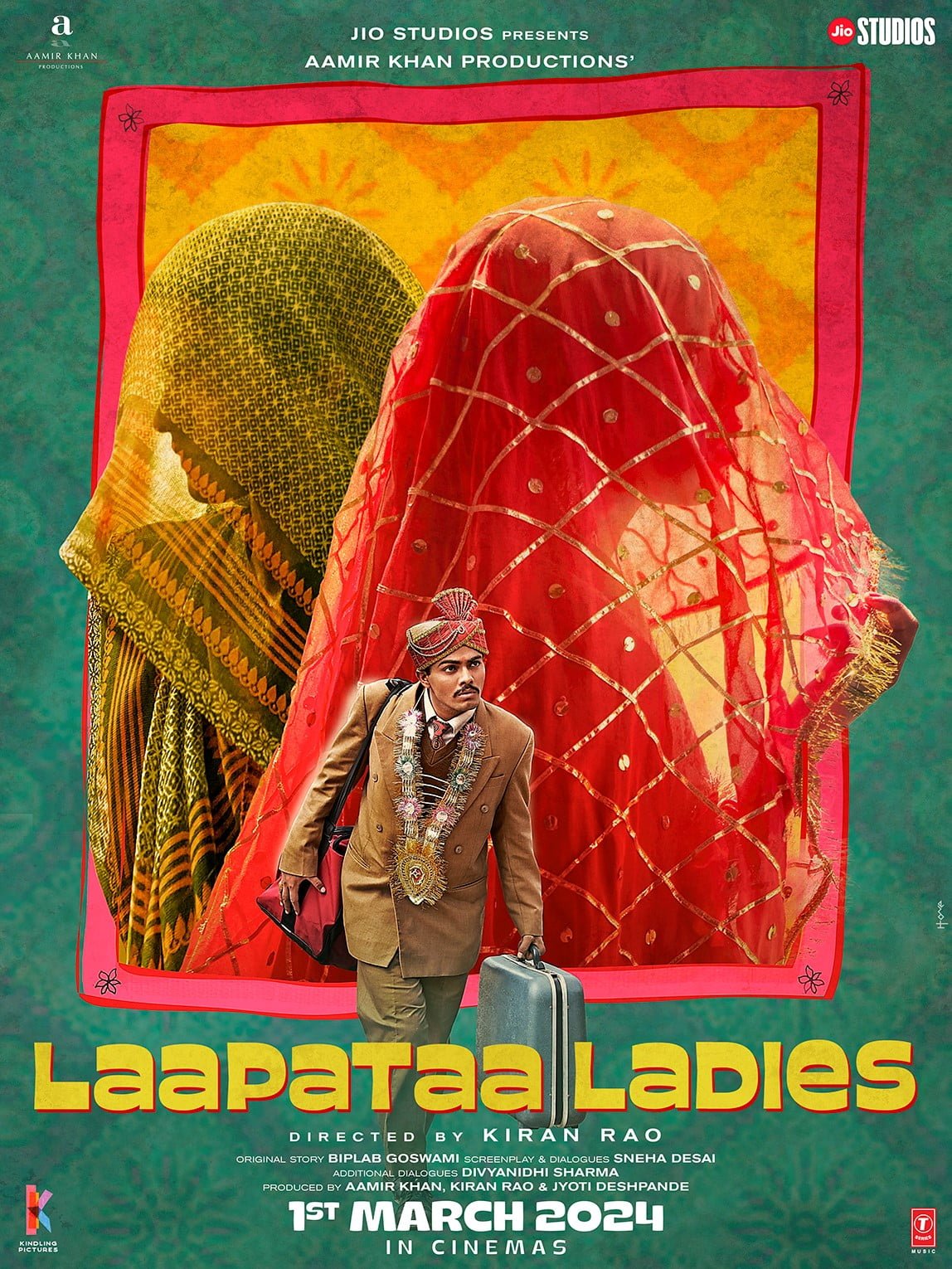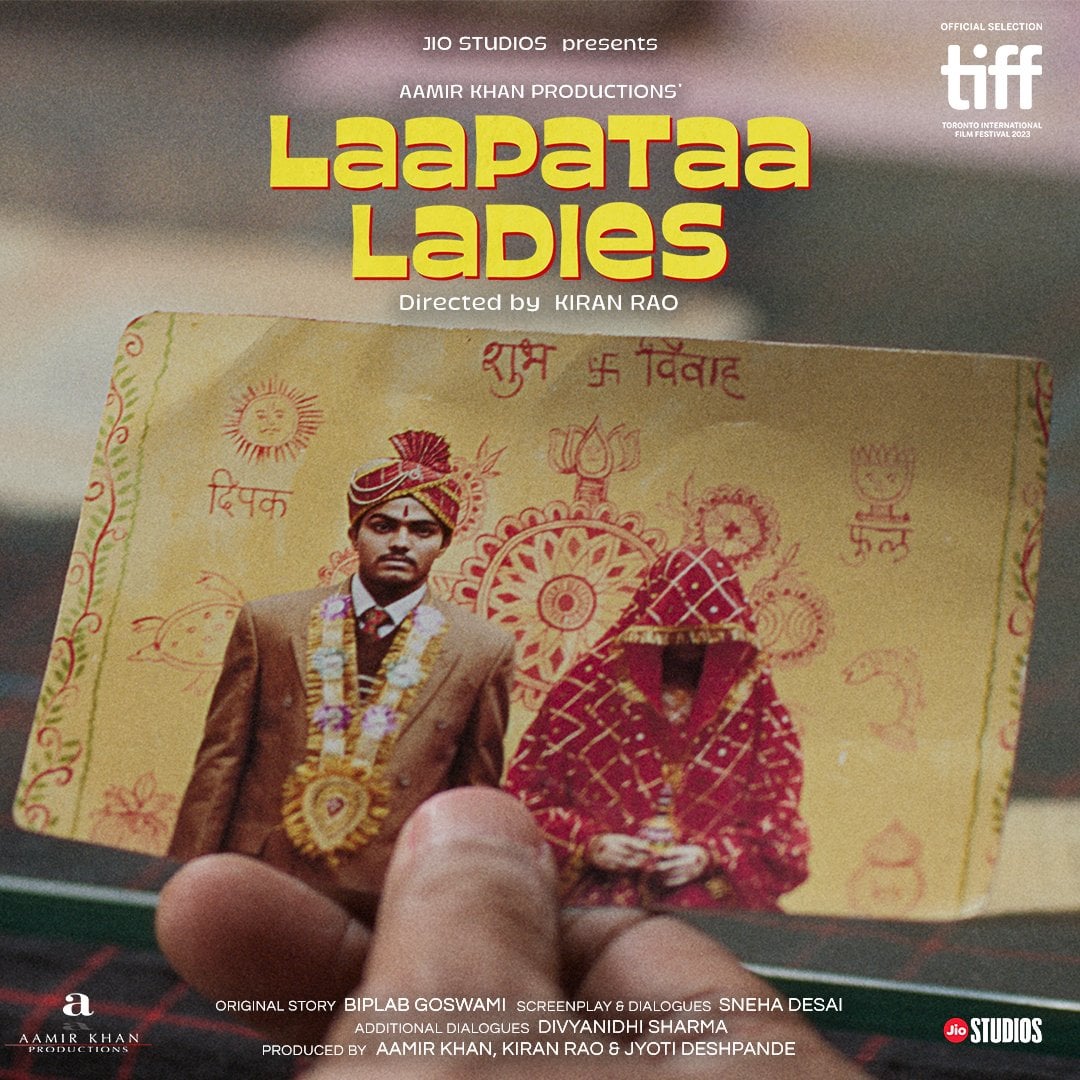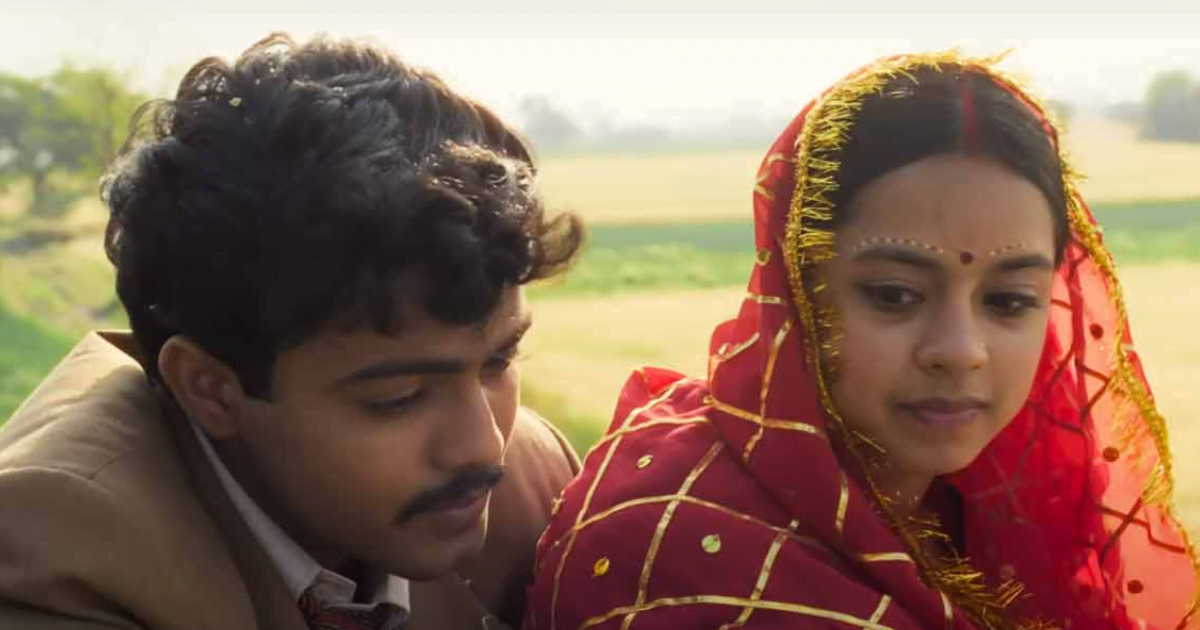Released on 1st March, 2024, Laapataa Ladies directed by Kiran Rao is a film that explores the identity and agency of women in rural India. The film tells the story of two newly wed brides who accidentally get separated from their husbands in a train. Their twin tales unfold parallely as the two young women discover themselves and realise their dreams.
The film tells the story of two newly wed brides who accidentally get separated from their husbands in a train.
Phool Kumari (played by Nitanshi Goel) has just been married to Deepak (Sparsh Srivastav) of Surajmukhi village and the newlyweds are en route to their home in the Belpur-Katariya Express, a train which carries 2-3 other newly married couples. All the brides are dressed in red bridal sarees with a long veil or ‘ghunghat’ obscuring their faces and identities from everyone. While getting off the train in the middle of the night, Deepak mistakenly takes with him another woman, Jaya (Pratibha Ranta), instead of his bride, Phool.
Jaya has just been married off to an abusive and violent man rumoured to have burnt his first wife to death, against her wishes. The mistake by Deepak allows her to attempt to escape from the potentially violent marriage and pursue her dreams of higher education in Dehradun. However, things take a turn when the local policeman confuses Jaya for a fraudster working for an extortionist gang of thieves disguised as fake brides.
The motif of the ghunghat in Laapataa Ladies
The motif of the veil as a restrictive and limiting garment that reinforces the patriarchy is omnipresent in the film. It is due to the veil that the two women are lost and the veil ensures that it is difficult for Deepak to find his wife. When he shows a photo of Phool for identification to the police, her face is hidden by a veil, making it difficult to trace her. While the veil only restricts and creates issues for Phool, Jaya is liberated through the veil. She gets a second chance at living her dreams because of the mistake caused by the veil. The veil provides her with anonymity in the temple and marketplace. By hiding her face and hence her identity from the police, the veil ensures that her abusive husband Pradeep’s search for her is delayed and prolonged.
The veil also provides comic relief and gives way to some hilarious gags in Laapataa Ladies. The veil not only hides a woman’s face, but also obscures her identity and disallows her from exercising her agency. Phool is advised to ‘look down not ahead’, by a female elderly relative, now that she has taken up the veil. Her movement is restricted and she is unable to navigate freely.
The portrayal of the police and the local justice system
The lack of faith in the police and the justice system is reflected in the common people’s inhibitions in approaching the local authority, which is initially shown as corrupt, greedy and brutal. The character of the local police officer at Murti is portrayed as a comical negative character who takes bribes, uses aggression and is not efficient in doing his job at first. The police are shown as an institution which common people fear and do not trust. The police officer wrongfully detains Jaya on false accusations of fraud and is generally shown as a character who has no empathy or ethics, whatsoever.
However, when Jaya’s true identity is revealed and her precarious situation is described, the local policeman becomes somewhat of a hero figure who protects her and saves her from living with the violent Pradeep. He cleverly turns the tables on Pradeep and ensures he leaves Jaya alone and does not bother her ever.
Through the depiction of the police officer’s character, Laapataa Ladies attempts to state that our perception of certain people might not be accurate. The confusions and misunderstandings regarding Jaya’s identity also reiterate this very idea.
A positive depiction of single women: the character of Manju Mai
The most unique thing about Laapataa Ladies is the positive portrayal of happy single women. In a society where we are conditioned to believe that being single automatically means being lonely and unhappy, the character of Manju Mai (played by Chhaya Kadam) is a breath of fresh air. She is an independent working woman who runs a tea stall on the Pateela station. She had left an abusive marriage and has been living alone for years.
In a society where we are conditioned to believe that being single automatically means being lonely and unhappy, the character of Manju Mai (played by Chhaya Kadam) is a breath of fresh air.
However, she is not lonely- in the station, she is joined by Chotu who works at her tea stall and Abdul, a beggar at the station.
Manju Mai does not have a husband, but she does have a community. Fiercely independent and strong with a heart of gold, Manju Mai employs the lost Phool at her tea stall and allows her to stay in her home. She impacts a naive Phool’s meek and conservative way of thinking greatly, broadening her worldview and educating her about her agency and the importance of independence. Although lost and separated from her doting husband, Phool discovers herself and forges an identity for her during this time.
The portrayal of sisterhood and shared struggles in Laapataa Ladies
Women’s desires and sisterhood are given expression in Laapataa Ladies. Deepak’s sister in law and Jaya forge a friendship, with the latter encouraging the sheltered wife to hone her art. In the end, it is her sketching skills clubbed with Jaya’s presence of mind that help find Phool. Deepak’s mother and grandmother also bond with Jaya, who encourages Deepak’s mother to cook her favourite lotus stem curry more often even though the men in the family do not prefer to eat the dish.
The daily struggles, inhibitions and joys of rural women and their shared solidarities and friendships grace the narrative of Laapataa Ladies..
Laapataa Ladies affirms the importance of identity and choice
In the end, Phool and Jaya are different women- Phool dreams of being a loving wife to her sweet and kind husband Deepak and wants to be a part of his caring family. Jaya, on the other hand, was never willing to get married to Pradeep and wanted to study further. Her dreams and aspirations are entirely different from Phool’s as is her situation. Unlike Deepak’s family, Pradeep’s mother is cruel and hungry for dowry while Pradeep is abusive and it is said that he might have killed his first wife because she was unable to give birth to a baby boy.
However, inspite of having entirely different hopes and lives, Phool and Jaya are both rural women who are stripped of their agency and independence.
However, inspite of having entirely different hopes and lives, Phool and Jaya are both rural women who are stripped of their agency and independence. Their identities are hidden behind restrictive veils and they have difficulties in exercising their rights and choices. Both Phool and Jaya are laapataa ladies, lost in a patriarchal society that withholds them the power of choice, independence and most importantly, an identity.
In the final scene, as Jaya, finally freed from Pradeep’s clutches, rides off to Dehradun in a bus, to fulfil her dreams of studying Agricultural Science and organic farming, and a wiser and more aware Phool is finally reunited with her husband and family, the viewers are made aware of the film’s inherent message which values women’s identities and ambitions, no matter what they might be. That each woman must have the right to choice and a right to her own self, is reiterated yet again by Laapataa Ladies.
Laapataa Ladies is feminist storytelling at its best. Bringing the lived experiences and narratives of rural, subaltern women to the forefront of Bollywood, it stresses on the need for female directors like Kiran Rao, who share the simple yet extraordinary stories of ordinary women in an age of flashy, hypermasculine films that reaffirm the patriarchy. Laapataa Ladies is a welcome change in contemporary Bollywood filmmaking and one can only hope that it inspires a generation of filmmakers, artists and storytellers for the years to come, who can take on the patriarchy, one film at a time.
About the author(s)
Ananya Ray has completed her Masters in English from Jadavpur University, Kolkata, India. A published poet, intersectional activist and academic author, she has a keen interest in gender, politics and Postcolonialism.










